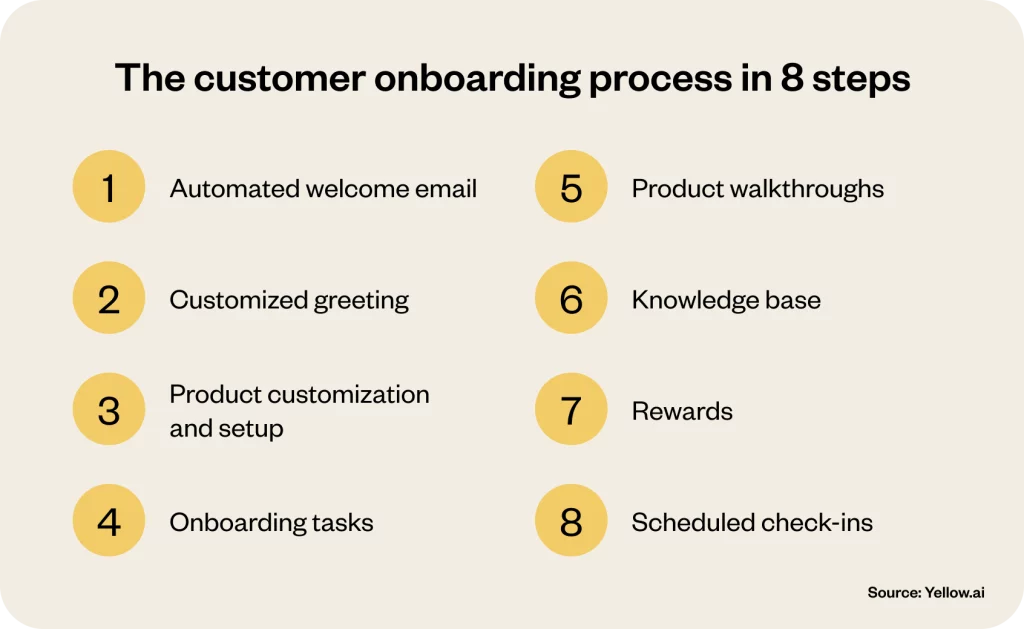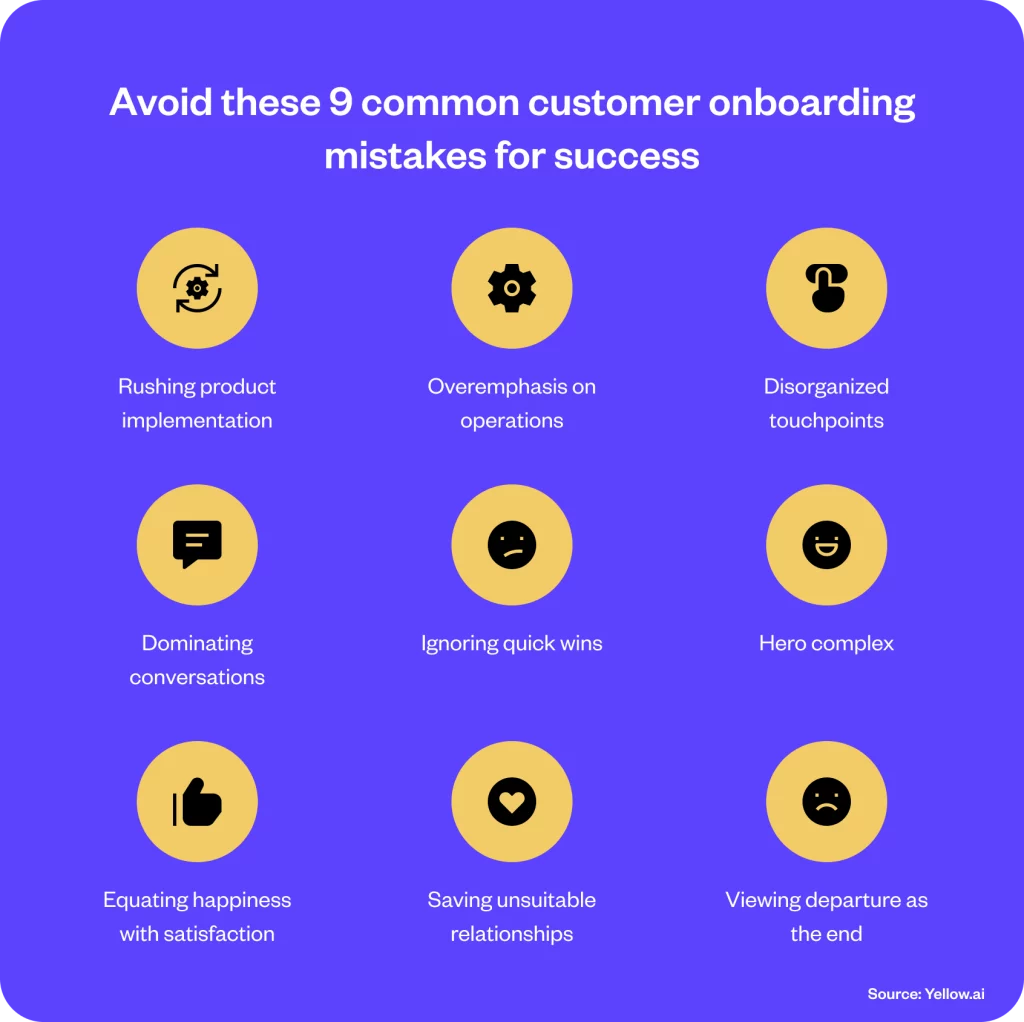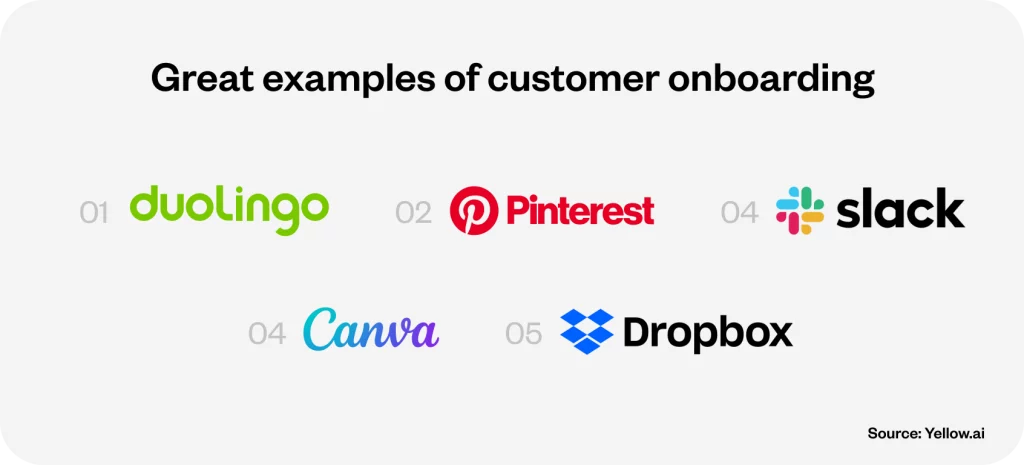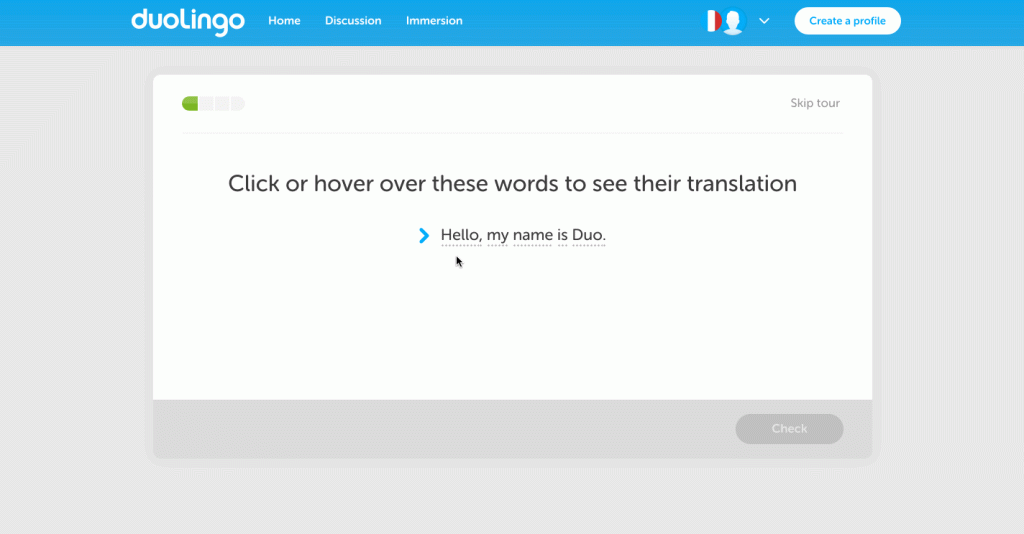Executive summary
Embark on a transformative journey with our definitive guide to customer onboarding. This blog explores the onboarding process and emphasizes innovative approaches and best practices that ensure customers grasp the value of your offerings and become loyal advocates. By integrating cutting-edge AI solutions, including customer onboarding templates and automation, businesses can deliver personalized, engaging onboarding experiences.
Introduction
In a digital landscape where every customer interaction can tip the scale between loyalty and indifference, the importance of a meticulously crafted customer onboarding process has never been more pronounced. The moment a customer decides to engage with your product or service marks the beginning of a pivotal journey. It is a journey where first impressions dictate the pace of future interactions and value realization. With 86% of consumers citing onboarding as a critical factor in their decision to remain with a brand, it’s clear that the stakes are high.
The advent of AI and automation technologies has revolutionized how businesses approach this crucial phase. That turns functional necessity into a strategic opportunity to wow new users. From automated welcome emails to personalized product walkthroughs, AI-driven onboarding processes are setting new standards in customer experience. This blog outlines a comprehensive strategy that leverages the latest tech advancements to secure customer loyalty from the get-go. Read on to explore the innovative techniques and tools that are reshaping the onboarding landscape. It paves the way for deeper connections and long-term customer engagement.
Related must-reads:
- Customer service automation – A full guide
- Customer service software: How to select the best one
- Good customer service: Ways to deliver [+10 Examples]
- 10 Bad customer service examples (How to fix them)
What is customer onboarding?
Customer onboarding serves as a crucial bridge connecting the moment a customer decides to invest in your product or service to the point where they find real value in their purchase. It’s essentially about ensuring new users understand how to use your offerings and also recognize the immediate benefits they stand to gain. This stage is pivotal because it shapes the customer’s perception and future interactions with your brand. That potentially turns a one-time buyer into a loyal advocate.
This process is more than a mere introduction to your product’s features; it’s a carefully designed journey tailored to make new customers feel welcome, informed, and confident. Effective onboarding seeks to eliminate buyer’s remorse by reinforcing the customer’s decision through positive reinforcement and clear, actionable guidance. It’s about painting a clear picture of how the product fits into the customer’s life or workflow. That ensures customers can quickly and easily start reaping the benefits of their investment.
For businesses, customer onboarding is about more than just customer retention. It is about fostering a deep sense of trust and satisfaction. By providing a smooth, engaging onboarding experience, companies can significantly boost their chances of building a loyal customer base. This early investment in customer success sets the foundation for a fruitful relationship. It encourages repeat business and turns new customers into enthusiastic brand champions.
Customers no longer want to wait in long queues and spend hours filling forms. They want a complete digital onboarding experience. According to Salesforce, 6 out of 10 customers believe companies need to provide digital experience to their customers.
Why is customer onboarding important?
The essence of customer onboarding lies in its power to build lasting connections right from the first interaction. This critical phase is where customers learn to navigate and appreciate your product or service. This phase marks the start of their journey towards becoming steadfast supporters of your brand. Customer onboarding goes beyond just an introduction. It is a strategic opportunity to showcase the tangible benefits and value of your offering. Doing so will ensure that customers understand how to use it and why it’s indispensable to them.
Why, then, does customer onboarding carry such weight in the business ecosystem?
Firstly, it significantly impacts customer retention by ensuring users fully adopt and integrate your offerings into their routines. A customer who clearly understands how to leverage a product is far more likely to perceive its value. That translates to reduced churn rates and higher satisfaction scores. Moreover, effective onboarding catalyzes the transformation of new users into product advocates. When customers experience firsthand the utility and efficiency of your product, buoyed by a supportive onboarding experience, they’re more inclined to share their positive experiences. This organic promotion amplifies your brand’s reach and credibility and contributes to a virtuous cycle of acquisition and retention.
The importance of customer onboarding extends beyond fostering initial satisfaction. It lays the groundwork for continuous engagement and upselling opportunities. By acquainting customers with the full spectrum of your product’s features and capabilities from the get-go, you’re ensuring they harness its immediate benefits and pave the way for future expansions of their usage. This initial education and empowerment phase is critical because a substantial percentage of returns and dissatisfaction stem from a lack of understanding of the product. Thus, by investing in a thorough, intuitive onboarding process, businesses can mitigate the risk of early drop-offs and also set the scene for a profitable, long-term relationship with their customers.
As a consequence of poor onboarding experience, companies can lose their customers in a short interval of time. After a poor customer experience, 8 out of 10 customers are more likely to switch to your competitors, according to a report by Zendesk.
The customer onboarding process in 8 steps
The initial phase after a customer chooses your service or product is crucial, not just for a great first impression but for laying the foundation of a lasting relationship. An effective onboarding process is indispensable, guiding customers from initial intrigue to full-fledged product mastery and satisfaction. Let’s explore the eight-step strategic framework designed to transform newcomers into loyal advocates.

1. Automated welcome email
The journey begins with an automated welcome email. It isn’t merely an acknowledgment but a pivotal first engagement that reassures the customer of their wise choice. A welcome email is the first chapter in your narrative with the customer. It emphasizes their importance to your brand and directs them towards the next steps in their journey.
Best practices
- Express gratitude, as it will reinforce the customer’s value to your brand.
- Provide concise and clear resources or links for immediate engagement.
- The call to action should resonate, beckoning them back to your platform.
2. Customized greeting
Tailoring the onboarding experience with a customized greeting makes each interaction feel exclusively designed for the customer. It fosters a deeper connection from the get-go. A personalized greeting showcases your commitment to meeting individual needs and makes the customer feel recognized and valued on a personal level.
Best practices
- Utilize customer data to personalize greetings across communications.
- Reflect on the customer’s preferences and previous interactions in the onboarding content.
Companies who deliver a better customer experience than their competition outperform their competitors financially by 89%.
3. Product customization and setup
Enabling customers to customize their profiles and settings from the outset ensures the product feels intuitively theirs, enhancing initial engagement. Personalized setup is crucial for demonstrating your product’s flexibility and user-centric design. It encourages customers to invest time and interest.
Best practices
- Guide customers through customization options with intuitive, easy-to-follow steps.
- Offer initial setup assistance, either through automated tools or direct support.
4. Onboarding tasks
Introducing structured tasks during onboarding helps customers quickly grasp your product’s value, facilitating a smoother adoption process. Early victories in these tasks boost confidence and underscore the tangible benefits of your product. Hence, it helps establish a proactive engagement.
Best practices
- Prioritize tasks that yield immediate results or benefits for the customer.
- Offer support and resources at each step, ensuring no question goes unanswered.
It’s incredibly tough to recover from a bad onboarding experience. PwC showed that 1 in 3 consumers will quit after just one poor encounter in a survey of 15000 customers. After two or three unpleasant experiences, 92 percent of them declared they’ll fully forsake the company.
5. Product walkthroughs
Product walkthroughs illuminate the core functionalities of your offering. They ensure customers understand how to leverage your product effectively. Knowledge empowers customers, turning potential frustration into a fascination with what your product can do for them.
Best practices
- Implement interactive and engaging tutorials that are easily accessible.
- Highlight features based on the customer’s potential use cases or interests.
In today’s market, customers don’t wait for you to fix the problem or take time to understand the process. According to Wyzowl, 80% of people deleted an app because they couldn’t understand how to use it.
6. Knowledge base
A comprehensive, easily navigable knowledge base allows customers to find answers at their convenience. It promotes self-service and reduces dependence on direct support. Ready access to information empowers customers. It enhances their experience and satisfaction with your product.
Best practices
- Regularly update the knowledge base with new insights and common queries.
- Ensure the search functionality is efficient and user-friendly.
7. Rewards
Incorporating a rewards system for milestones or achievements within the onboarding process motivates continued exploration and use of your product. Rewards not only delight but also validate the customer’s decision to choose your product. That ultimately leads to enhanced loyalty.
Best practices
- Tailor rewards to match customer interests or product usage goals.
- Communicate the rewards program clearly, making it an integral part of the onboarding journey.
8. Scheduled check-ins
Regular check-ins convey ongoing support and interest in the customer’s experience, offering opportunities to address any concerns and reinforce the relationship. These check-ins are your pulse on customer satisfaction and engagement, which are vital for adapting the onboarding process and ensuring long-term success.
Best practices
- Utilize feedback from check-ins to refine and personalize the onboarding experience further.
- Schedule these interactions at strategic points in the customer journey to maximize impact.
9 Mistakes to avoid when onboarding customers
Efficient customer onboarding is a linchpin in securing a successful long-term relationship with your customers. However, certain missteps can derail the process, undermining customer satisfaction and loyalty. By recognizing and avoiding these common mistakes, businesses can significantly enhance their onboarding experience.

1. Rushing product implementation
Initiating product implementation immediately after finalizing the deal can overwhelm new customers. It can lead to confusion and a lack of engagement. Instead, facilitate a smooth transition with a structured onboarding process that gradually introduces the product’s features and benefits. Schedule a kickoff meeting to outline the onboarding timeline, set clear expectations, and establish open lines of communication.
2. Overemphasis on operations
Focusing solely on operational details can detract from the customer’s excitement and emotional connection with the product. To counteract this, integrate storytelling and success stories that highlight the product’s value and impact. Balance operational instructions with engaging content that reinforces the benefits and real-world applications of your product.
3. Disorganized touchpoints
Providing numerous touchpoints without a clear direction can leave customers feeling lost and frustrated. Organize the onboarding journey with a clear pathway that guides customers through each step, ensuring a cohesive and intuitive experience. Utilize a guided onboarding flow that prioritizes essential actions and progressively introduces more complex features.
4. Dominating conversations
Dominating the conversation and not actively listening can miss critical customer insights and concerns. Encourage open dialogue and actively seek customer feedback to tailor the onboarding experience to their specific needs. Implement regular check-ins and feedback loops throughout the onboarding process to adjust the approach based on customer input.
5. Ignoring quick wins
Overlooking opportunities for quick success can diminish the perceived value of your product. Highlight immediate benefits and easy wins that customers can achieve to build momentum and engagement. Identify and communicate quick, achievable goals within the first few days of onboarding to demonstrate value and build confidence.
6. Hero complex
Constantly acting as the ‘hero’ to solve problems can prevent customers from becoming self-sufficient. Foster a proactive, educational approach that empowers customers to solve challenges independently. Create a comprehensive knowledge base and offer training sessions that equip customers with the skills and knowledge to utilize your product effectively.
7. Equating happiness with satisfaction
Mistaking temporary customer happiness for deep satisfaction can lead to overlooked issues. Dive deeper into feedback to understand the root causes of any problems and address them comprehensively. Conduct thorough satisfaction surveys that go beyond surface-level metrics to gauge true customer sentiment.
8. Saving unsuitable relationships
Investing resources to save relationships with customers who are not a good fit can be counterproductive. Recognize when a customer’s needs do not align with your offering and focus efforts on those who benefit most from your product. Use customer health scores to identify and prioritize efforts on customers with the highest potential for success and growth.
9. Viewing departure as the end
Considering a customer’s departure as a conclusion misses opportunities for learning and improvement. Treat departures as a chance to gather feedback and insights that can inform and enhance your onboarding process. Conduct exit interviews or surveys to understand the reasons behind a departure and apply these learnings to prevent future churn.
5 Great examples of customer onboarding
The journey a customer embarks on immediately after they sign up can significantly impact their perception and long-term relationship with a product or service. This critical phase, known as customer onboarding, sets the groundwork for usage, satisfaction, and loyalty. Some companies have mastered the art of onboarding, turning it into an experience that instructs and also delights. Here are five standout examples of businesses that excel in customer onboarding, showcasing why their approach is noteworthy.

1. Duolingo
Duolingo’s onboarding process is a perfect blend of simplicity and engagement. Upon signing up, users are greeted with a friendly, animated walk-through that introduces them to the app’s features in an interactive and fun way.

What makes Duolingo’s onboarding exceptional is its immediate immersion into language learning, allowing users to start lessons right away without feeling overwhelmed. This approach minimizes friction and maximizes excitement, ensuring users feel progress from day one.
2. Pinterest
Pinterest excels in customizing the user experience from the very beginning. By prompting new users to select a few areas of interest, Pinterest tailors the content feed to individual preferences, making the platform instantly relevant and engaging. This personalized onboarding process helps users see the value of Pinterest immediately, encouraging them to dive deeper into its offerings.

3. Slack
Slack’s onboarding stands out for its clarity and guidance. New users are introduced to the platform’s functionalities through a series of interactive tutorials that highlight key features in context.

This hands-on approach helps users understand how to use Slack effectively for communication and collaboration, reducing the learning curve and fostering a sense of competence and comfort with the tool.
4. Canva
Canva simplifies the design process for its users right from the start. Its onboarding tour guides users through creating a project, using templates, and customizing designs, making the platform accessible to both design novices and professionals.

By demystifying design and showing users quick wins, Canva sets the stage for creativity and continued engagement.
5. Dropbox
Dropbox personalizes its onboarding by asking new users about their intended use of the service, which informs the guidance and tips provided during the initial setup.

This tailored approach ensures users understand how to use Dropbox to meet their specific needs, enhancing the product’s perceived value from the outset.
How Yellow.ai can help enhance the customer onboarding experience?
Yellow.ai, with its cutting-edge technology, offers a suite of solutions tailor-made for streamlining and enriching the customer onboarding process. Leveraging the power of Dynamic AI Agents, Yellow.ai enables businesses to deliver personalized, automated interactions that significantly enhance the customer onboarding experience. Here’s how Yellow.ai stands as a game-changer in customer onboarding:
- Dynamic AI agents: These agents facilitate automated welcome messages and personalized interactions, ensuring customers feel valued from the outset.
- Natural Language Processing (NLP): Yellow.ai’s NLP capabilities understand and respond to customer queries in a human-like manner, providing guidance and support throughout the onboarding process.
- No-code platform: The platform’s no-code interface allows for rapid deployment and customization of onboarding flows, ensuring a seamless experience for customers.
- Integrated knowledge base: An AI-powered knowledge base offers instant access to information, enabling customers to find answers to their questions without delay.
- Real-time analytics and insights: Track and analyze customer interactions to continually refine and optimize the onboarding process, ensuring it meets evolving customer needs.
To explore how Yellow.ai can transform your customer onboarding experience and drive engagement and loyalty, book a demo today. Discover the potential of AI in creating personalized, efficient, and memorable onboarding journeys.
The final thoughts
The journey of revolutionizing customer onboarding marks the beginning of a new era in customer relations. It is an era where technology and personalization merge to create unparalleled customer experiences. As businesses strive to navigate the complexities of initial customer engagement, embracing innovative technologies becomes a necessity for success.
The ambition to metamorphose first-time users into dedicated brand ambassadors underscores the profound importance of an insightful, proactive onboarding strategy. The crux of impactful onboarding is rooted in a deep-seated commitment to meeting and surpassing customer expectations at every juncture. By harnessing the power of advanced tools and a thoughtful approach, businesses have the unique opportunity to lay down the foundations of trust and loyalty. This strategic investment in customer onboarding is the linchpin in cultivating an ecosystem where every customer’s journey is recognized and celebrated.
Frequently asked questions (FAQs)
What are the three stages of customer onboarding?
The three pivotal stages of customer onboarding include Introduction, where customers are welcomed and acquainted with the product or service; Integration, where customers are guided through setting up and starting to use the product effectively; and Independence, where customers gain confidence to use the product on their own, supported by resources for self-help and further learning.
How can the customer onboarding process be improved?
Improving the customer onboarding process involves personalizing interactions, streamlining the setup and learning curve with clear guidance and resources, and incorporating feedback mechanisms to continually adapt and enhance the experience. Technologies like AI chatbots and NLP can automate and personalize the process, making it more efficient and engaging.
How can we measure the success of our customer onboarding program?
The success of a customer onboarding program can be measured through various metrics. Among these, customer satisfaction scores (CSAT) and Net Promoter Scores (NPS) stand out as pivotal indicators of immediate customer sentiment. Furthermore, the longevity of customer engagement is mirrored in retention rates, while product usage patterns reveal the depth of adoption and integration into users’ lives. Yet, perhaps the most telling measure is the journey to the first ‘moment of success’—the point where customers genuinely grasp the value your product adds to their daily routines.
What are the key steps in the customer onboarding process?
Key steps in the customer onboarding process typically include welcome communications, personalized setups, product walkthroughs, providing a comprehensive knowledge base, setting up early success markers, and scheduled check-ins to ensure continuous engagement and support.
Can the onboarding process be automated?
Yes, significant portions of the onboarding process can be automated using AI and machine learning technologies. Automation can streamline repetitive tasks, provide instant responses to common queries, and personalize the onboarding journey for each customer, enhancing their overall experience.
How do you keep customers engaged after onboarding?
Keeping customers engaged after onboarding involves offering continuous value through regular updates, advanced training sessions, community engagement, personalized offers, and proactive support. Monitoring customer behavior and feedback enables businesses to adapt and evolve their engagement strategies over time.






















